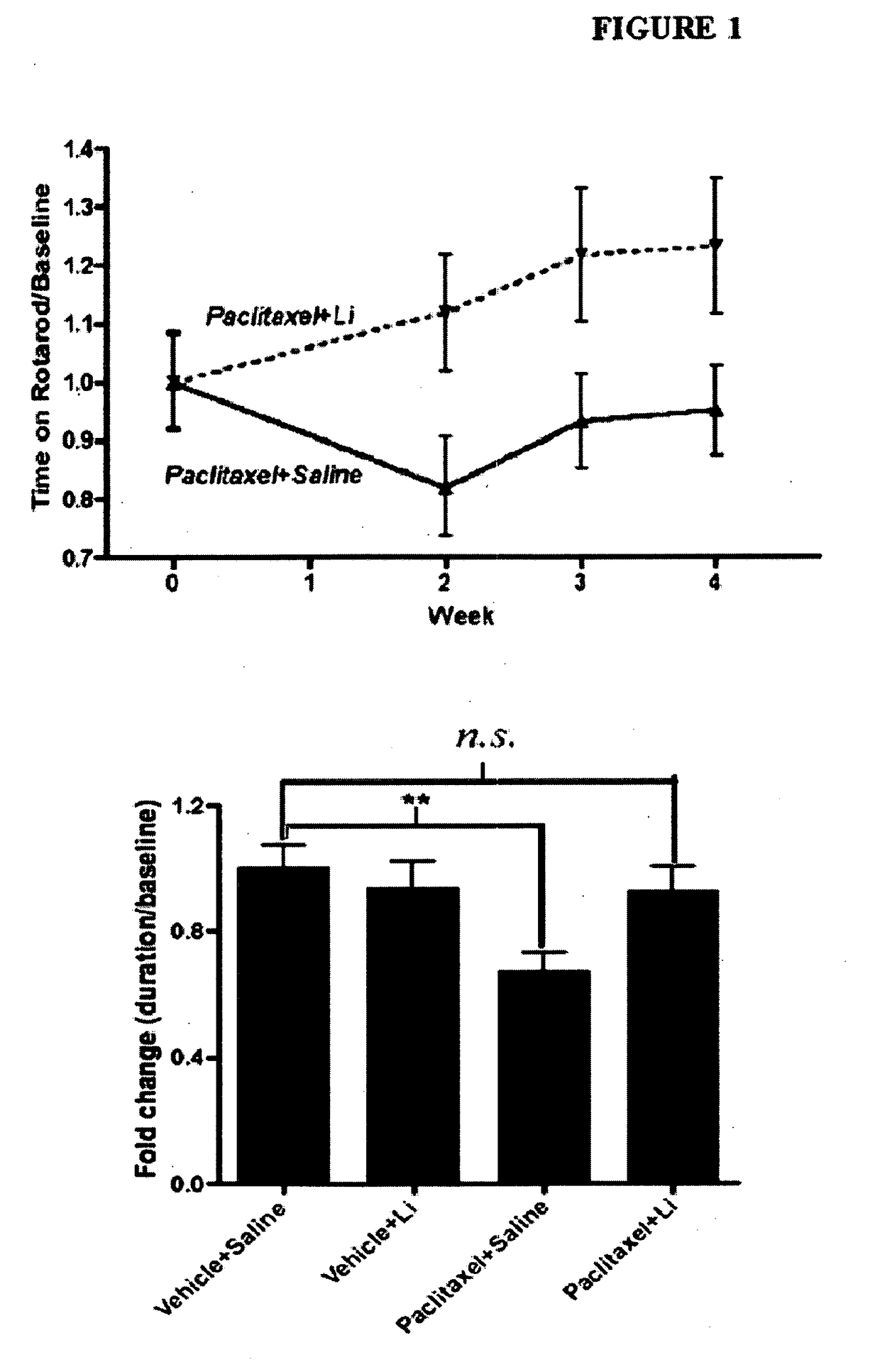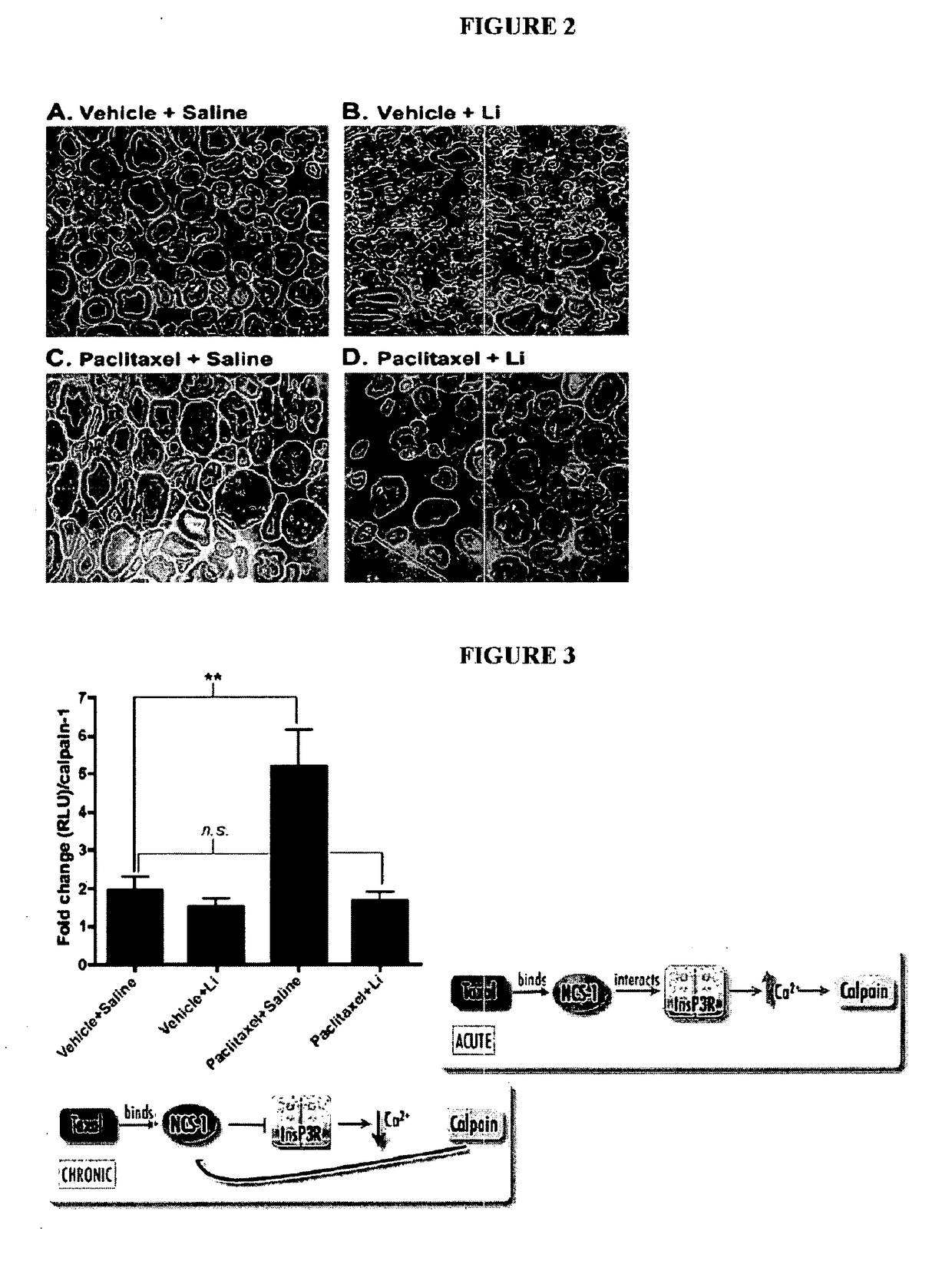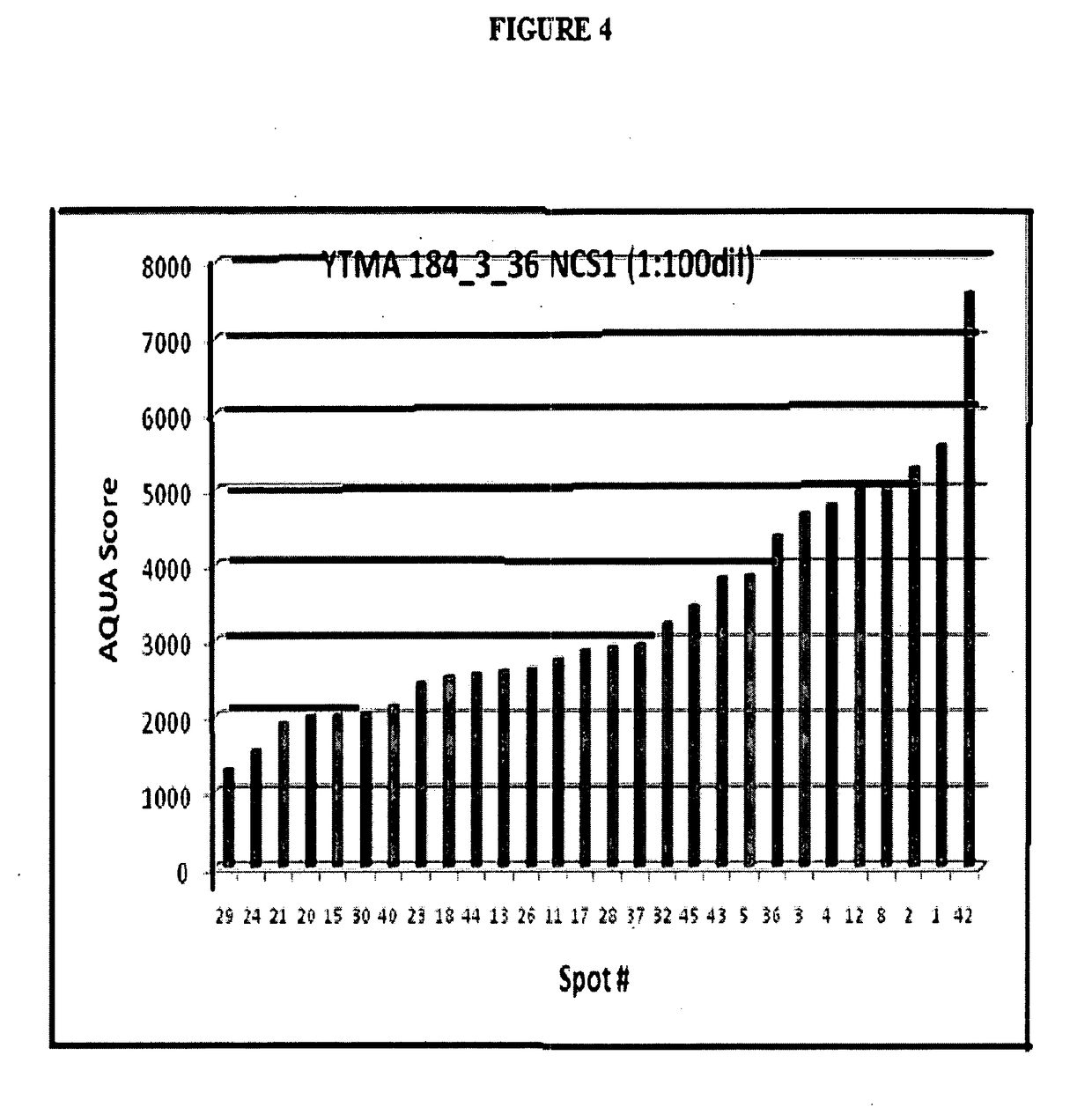Drug therapy to inhibit chemotherapy-induced adverse effects and related pharmaceutical compositions, diagnostics, scrreening techniques and kits
a technology of drug therapy and adverse effects, applied in the direction of drug compositions, peptide/protein ingredients, instruments, etc., can solve the problems of ciae, affecting the quality of life of patients, reducing chemotherapy doses, discontinuing treatment, etc., to reduce cognition/cognitive impairment, reduce the effect of ciae, and ameliorating and/or preventing cia
- Summary
- Abstract
- Description
- Claims
- Application Information
AI Technical Summary
Benefits of technology
Problems solved by technology
Method used
Image
Examples
example 1
Drug Therapy to Prevent Chemotherapy-Induced Polyneuropathy (Repositioning of AV411 (Ibudilast))
[0111]We recently reported that paclitaxel binds to neuronal calcium sensor 1 (NCS-1) a protein found in many cell types which enhances the ability of these cells to generate internal calcium (Ca+2) signals. B. Ehrlich, Chronic exposure to paclitaxel diminishes phosphoinositide signaling by calpain-mediated neuronal calcium sensor-1 degradation, PNAS, Jun. 26, 2007, vol. 104, no. 26, pp. 11103-11108. Previously it was thought that the only effect of paclitaxel was to stabilize microtubles, a structural component of cells. Our new findings provide a molecular pathway to explain paclitaxel-induced peripheral neuropathy and a potential mechanism to prevent damage of peripheral neurons.
[0112]With many chemotherapeutic drugs there is an enhanced Ca+2 signal which leads to hyper-activation of neurons and activation of enzymes that lead to pathological changes in the neurons. Our hypothesis is t...
example 2
Drug Therapy to Prevent Chemotherapy-Induced Polyneuropathy (Repositioning of Li Salt and Other Agents)
[0118]In the experiment of this example, we found that all three classes of drugs that treat bipolar disease (lithium carbonate, valproic acid, and chlorpromazine) prevent neuronal calcium sensor 1 (NCS-1) from binding to the inositol 1,4,5 trisphosphate receptor (InsP3R). Based upon our observations regarding the activity of lithium carbonate, valproic acid, and chlorpromazine, we believe that there are additional drugs in these classes that will have the desired effect of preventing chemotherapy-induced polyneuropathy such as, but not limited to, bortezomib and carfilzomib.
[0119]The relative effects of paclitaxel-LiCl and paclitaxel-AV411 co-administration on microtubule assembly were also determined. Additionally, we confirmed through tryptophan fluorescence that paclitaxel binds to NCS-1 (FIG. 9). NMR confirmed that AV411 (ibudilast) binds to NCS-1 (FIG. 10).
[0120]These bipolar...
example 3
Expression of NCS-1 in Human Breast Tissue
[0130]We used an automated scoring system for assessing biomarker expression in tissue sections called the automated quantitative analysis (AQUA) system (JNCI J Natl Cancer Inst (21 Dec. 2005) 97 (24): 1808-1815, see also, Camp, et al., Nat Med 2002; 8:1323-7) to evaluate NCS-1 expression in human breast tissue. The AQUA system is linked to a fluorescent microscope system that detects the expression of biomarker proteins by measuring the intensity of antibody-conjugated fluorophores within a specified subcellular compartment (typically including the nucleus, cytoplasm, and plasma membrane) within the tumor region of each tissue microarray spot. The result is a quantitative score of immunofluorescence intensity for the tumor. The use of an AQUA analysis method removes the subjectivity of the traditional scoring system and provides more continuous and reproducible scoring of protein expression scoring in tissue samples. Id.
[0131]As shown in FI...
PUM
 Login to View More
Login to View More Abstract
Description
Claims
Application Information
 Login to View More
Login to View More - R&D
- Intellectual Property
- Life Sciences
- Materials
- Tech Scout
- Unparalleled Data Quality
- Higher Quality Content
- 60% Fewer Hallucinations
Browse by: Latest US Patents, China's latest patents, Technical Efficacy Thesaurus, Application Domain, Technology Topic, Popular Technical Reports.
© 2025 PatSnap. All rights reserved.Legal|Privacy policy|Modern Slavery Act Transparency Statement|Sitemap|About US| Contact US: help@patsnap.com



